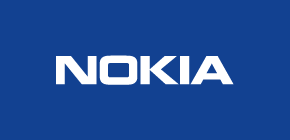Nokia has launched its Service Enablement Platform (SEP), claimed to be the first commercial solution to deliver radio network programmability, Artificial Intelligence (AI) and Machine Learning (ML) innovation across the Open RAN (O-RAN) ecosystem.
Nokia SEP launches with Nokia’s RIC xApps, including Advanced Traffic Steering and Anomaly Detection, which are currently in proof-of-concepts and trials with major communication service providers (CSP).
This is the platform to combine the near-real time RAN Intelligent Controller (RIC) and Multi-access edge computing (MEC) together on a single platform, providing value and new innovative use cases. Nokia SEP leverages low-latency information to boost optimisation through closed-loop automation and faster, more flexible service deployments.
It also adds programmability with AI/ML technologies, enabling innovative RAN use cases, including Automated AI/ML based network optimisation xApps and enterprise specific RAN adaptation. It is a single platform that deploys both RIC and MEC capabilities for intelligence and innovation, and it can be adapted for specific CSP or enterprise requirements.
Utilising Nokia’s edge-optimised AirFrame servers, SEP can run on the edge and share infrastructure with Cloud RAN and other virtualised network functions. AirFrame Open Edge provides secured and high performance ultra-small footprint edge cloud infrastructure for indoor and outdoor environments.
The platform launches with Nokia RIC xApps, a suite of plugins which give CSPs advanced control of 5G radio network use cases, including the Nokia Advanced Traffic Steering xApp, an AI/ML based optimisation algorithm that dynamically improves the efficiency of traffic distribution in the radio access network. It will also include the Nokia Anomaly Detection xApp, which uses machine learning to quickly detect and classify irregular behaviour patterns in the RAN. SEP supports xApps from different providers.
Daryl Schoolar, practice leader for Service Provider Networks at Omdia, says, “The level of activity in the Open RAN space has rapidly evolved over the last twelve months. Nokia’s latest announcement about implementing the O-RAN standardised near real-time RAN Intelligent Controller (RIC) function together with MEC on its Service Enablement Platform product which supports xApps from multiple sources, including third-party, reinforces Nokia´s firm commitment to O-RAN and Open RAN solutions.”
 Pasi Toivanen, head of Edge Cloud BU at Nokia, comments, “Embracing open collaboration is key to the development of 5G use cases and harnessing the true power of the technology. Nokia’s Service Enablement Platform adds a new intelligence layer to the RAN and enables the creation of high value add use cases.
Pasi Toivanen, head of Edge Cloud BU at Nokia, comments, “Embracing open collaboration is key to the development of 5G use cases and harnessing the true power of the technology. Nokia’s Service Enablement Platform adds a new intelligence layer to the RAN and enables the creation of high value add use cases.
This is part of Nokia’s continued commitment to leading an open mobile future with a strong network performance and security. We are committed to making it easier for our CSP customers to actively support the adoption of Open RAN principles and standards.”
The Finland-based network technology provider performed the first RIC trials in commercial networks and is actively engaging with major CSP and research groups globally with proof of concepts, trials and development for O-RAN and RIC, including public trials with AT&T and China Mobile.
Nokia SEP Platform is available for CSPs starting from Q1 2021. Nokia is working closely with CSPs to commercialise use cases (xApps) during 2021.
Comment on this article below or via Twitter: @VanillaPlus OR @jcvplus






